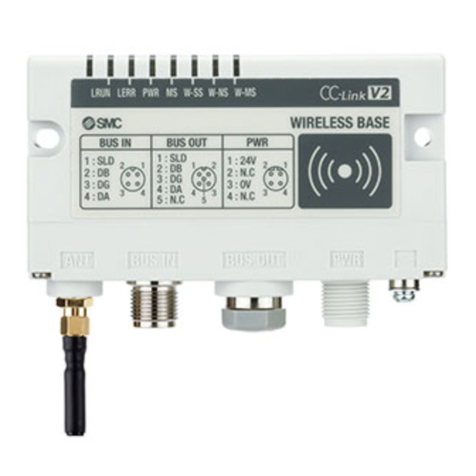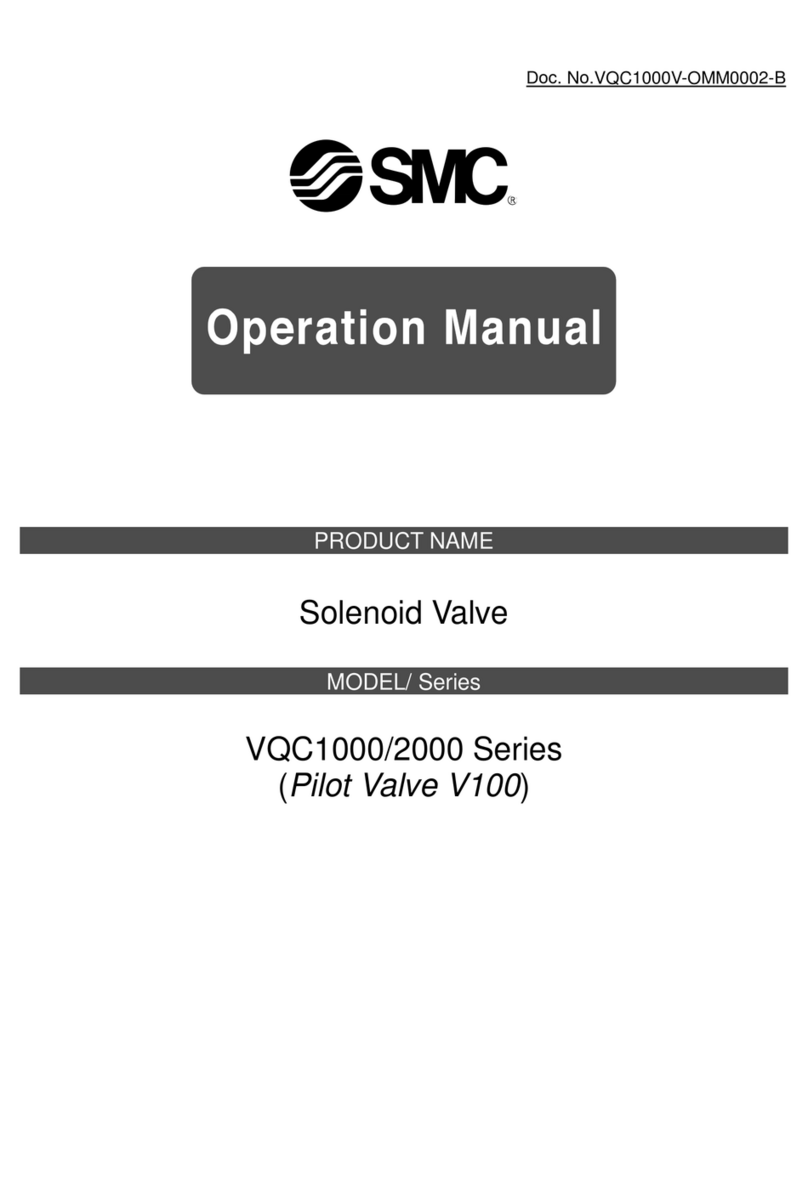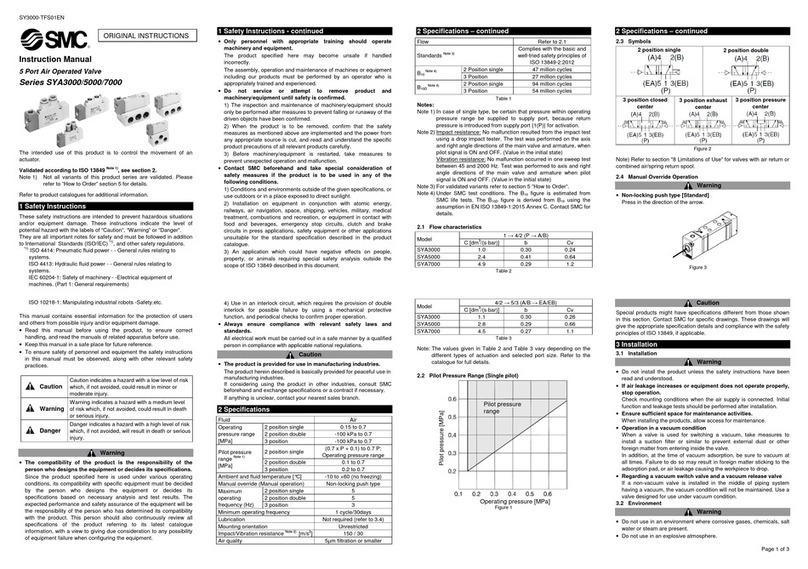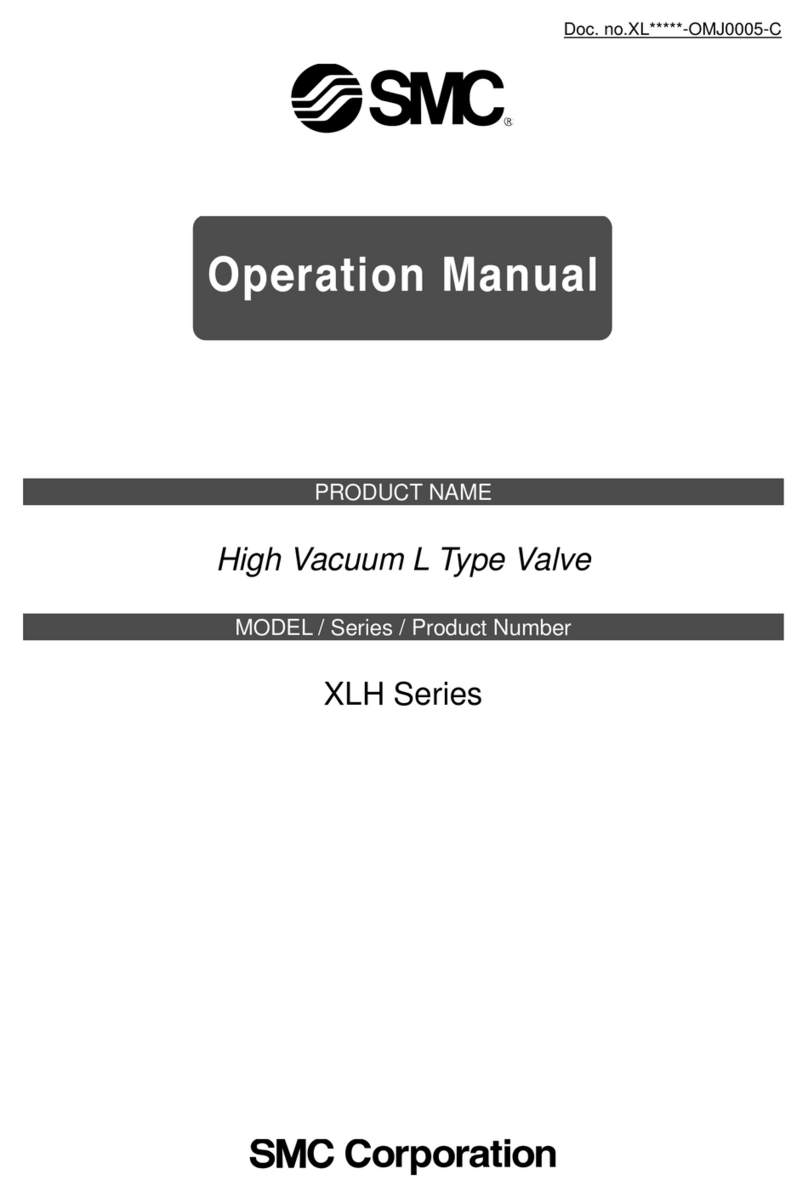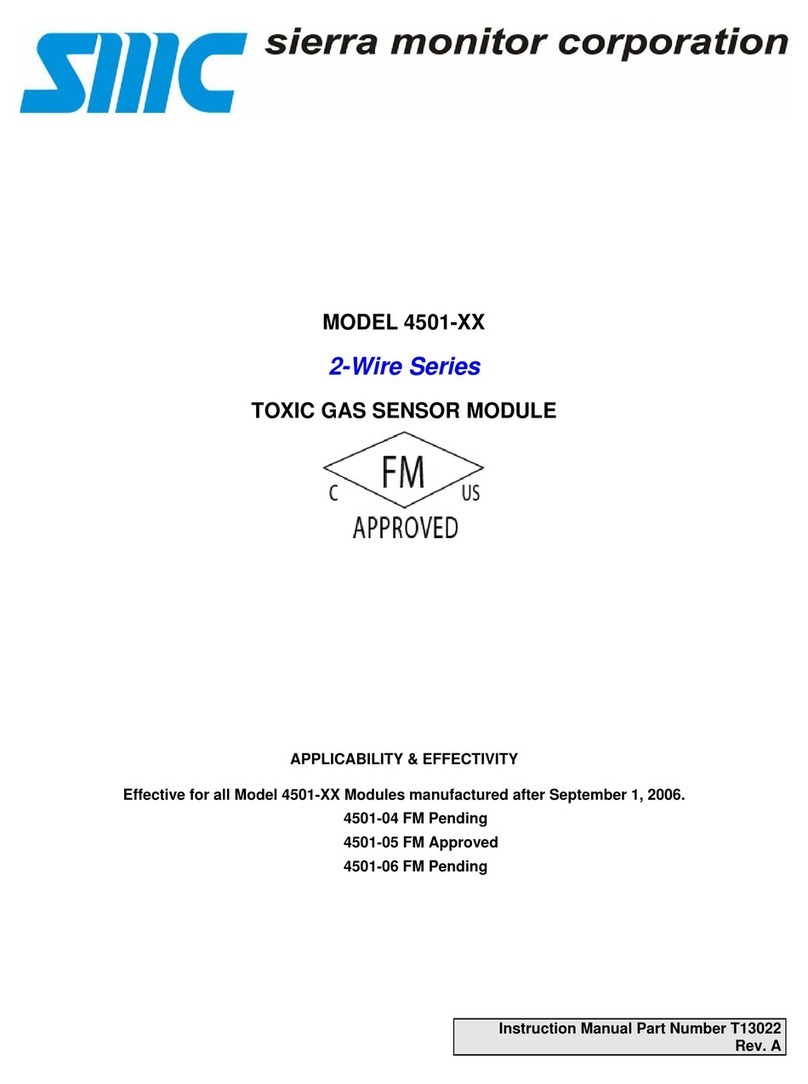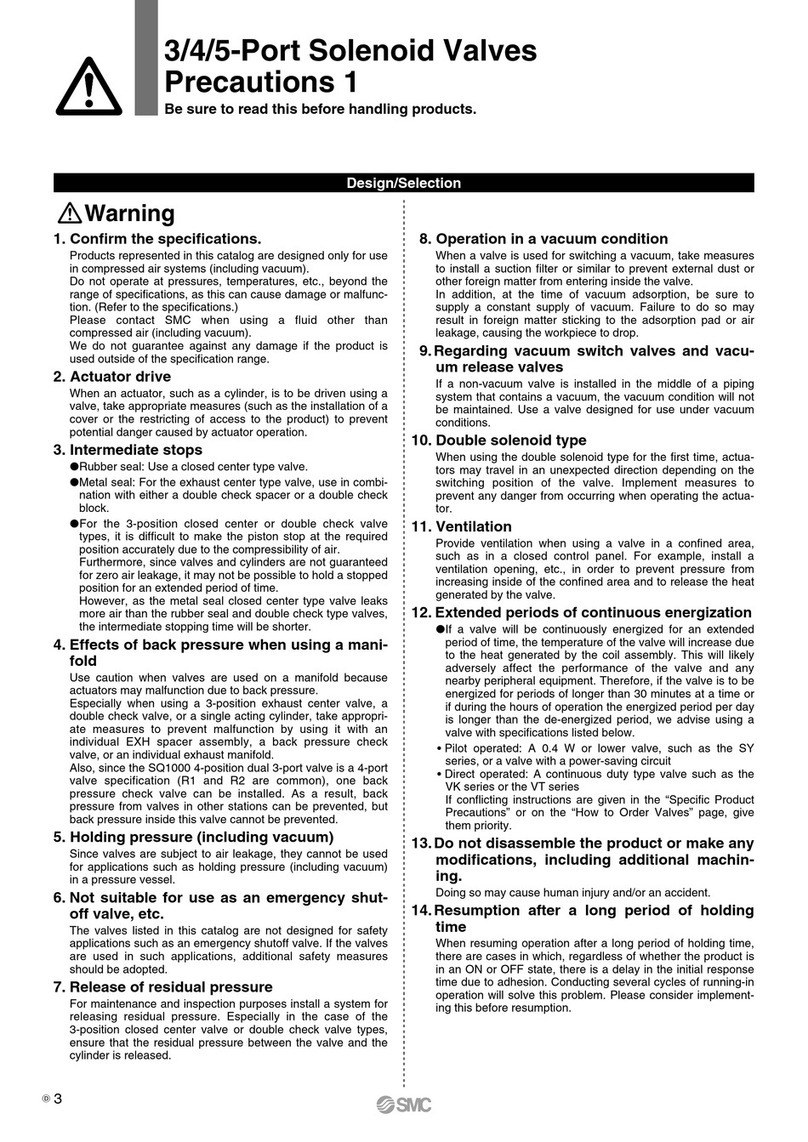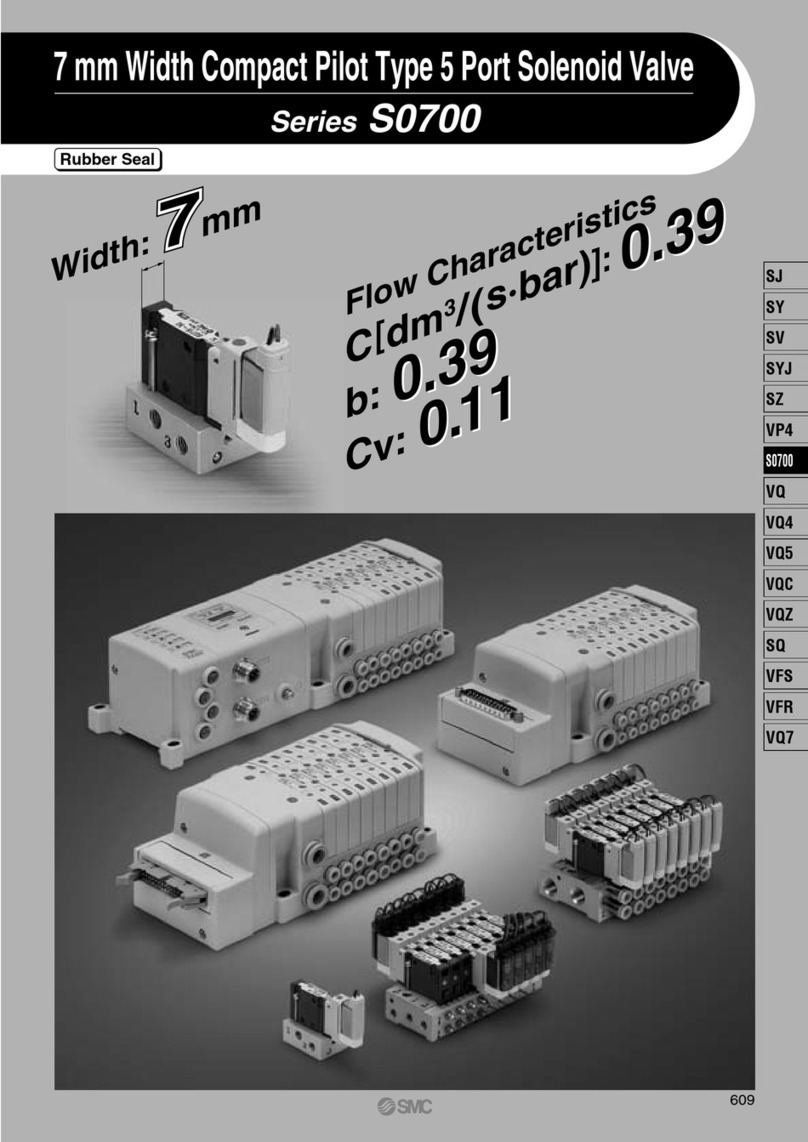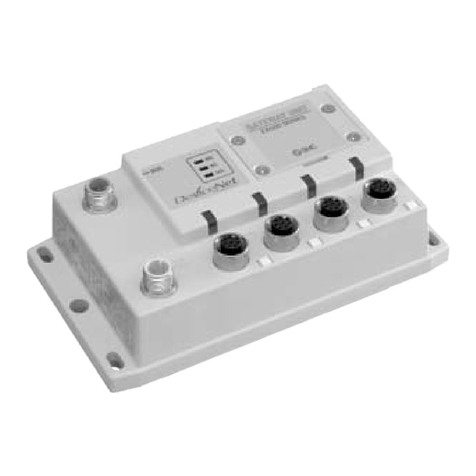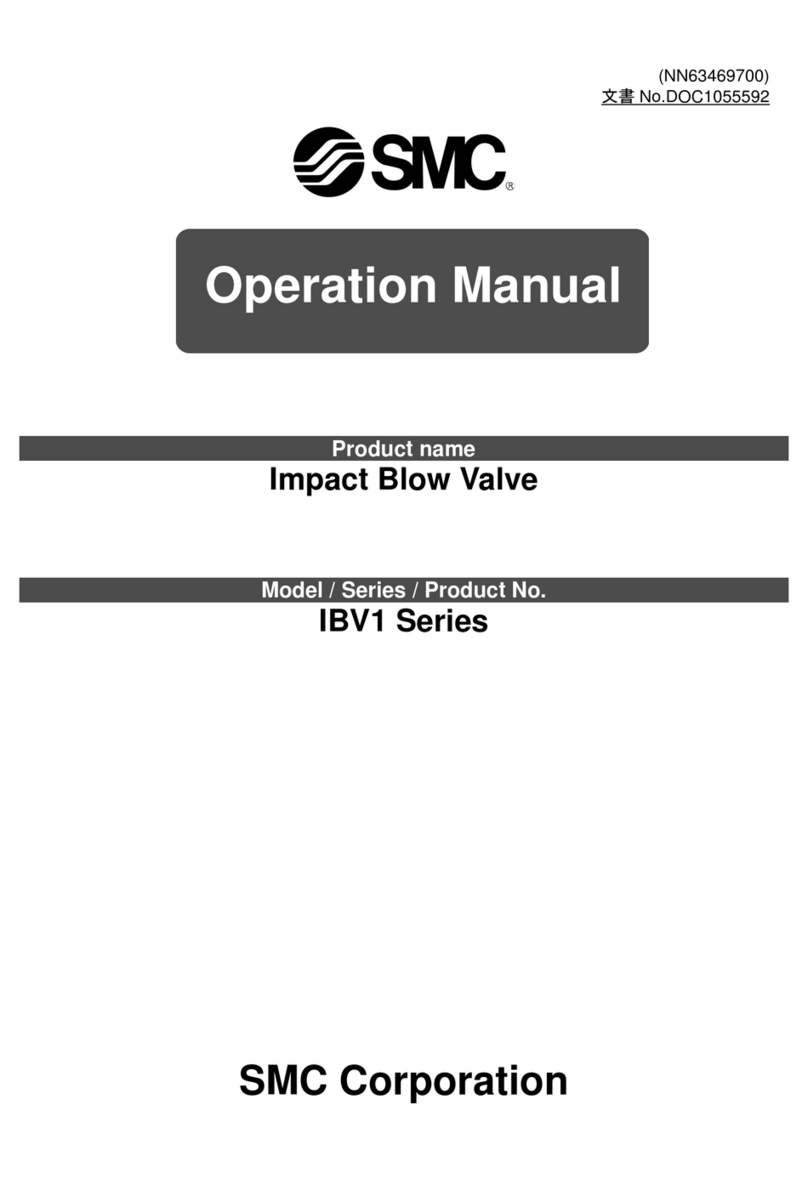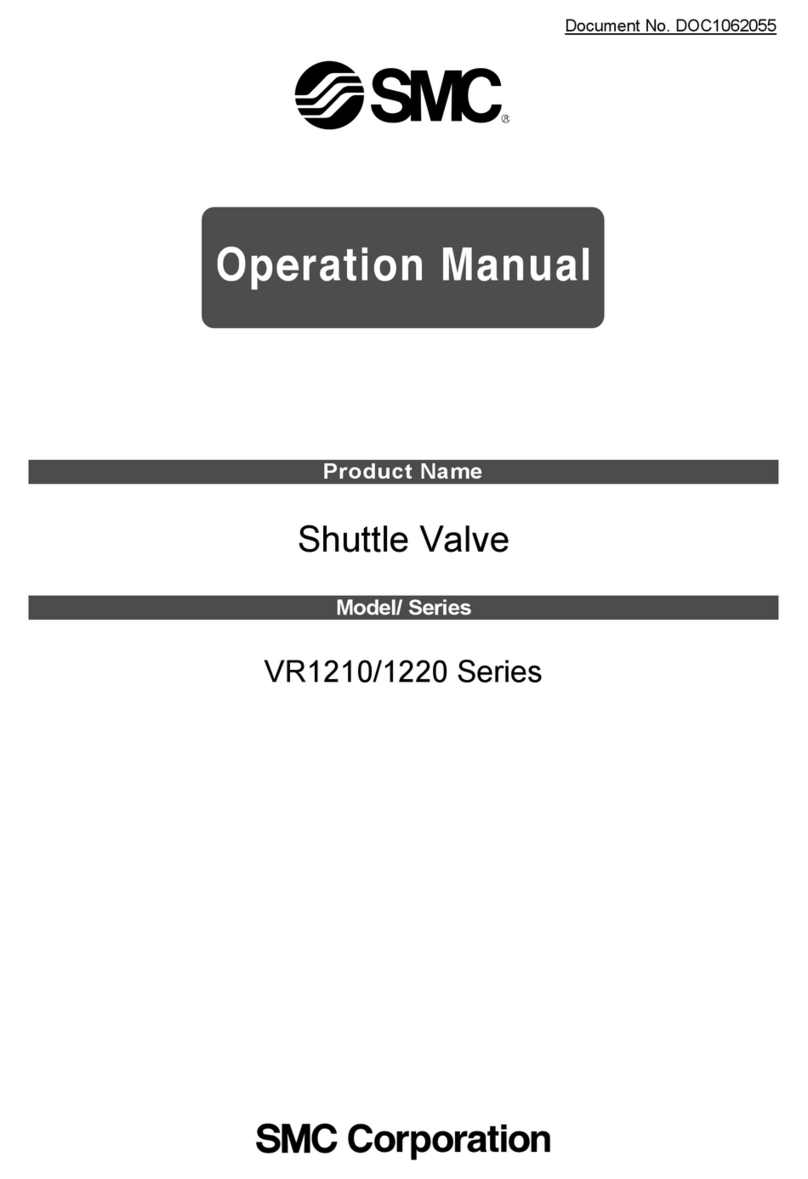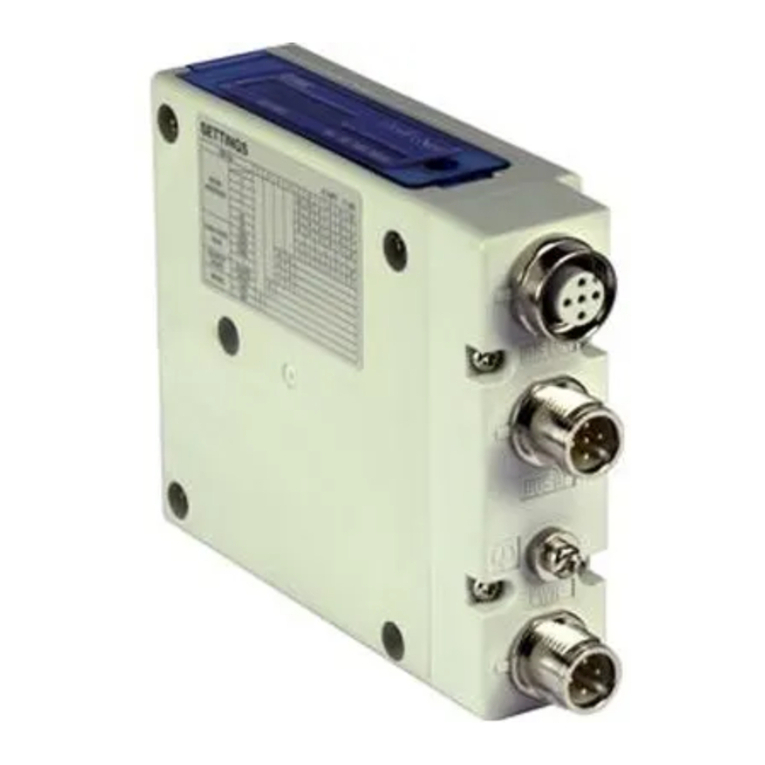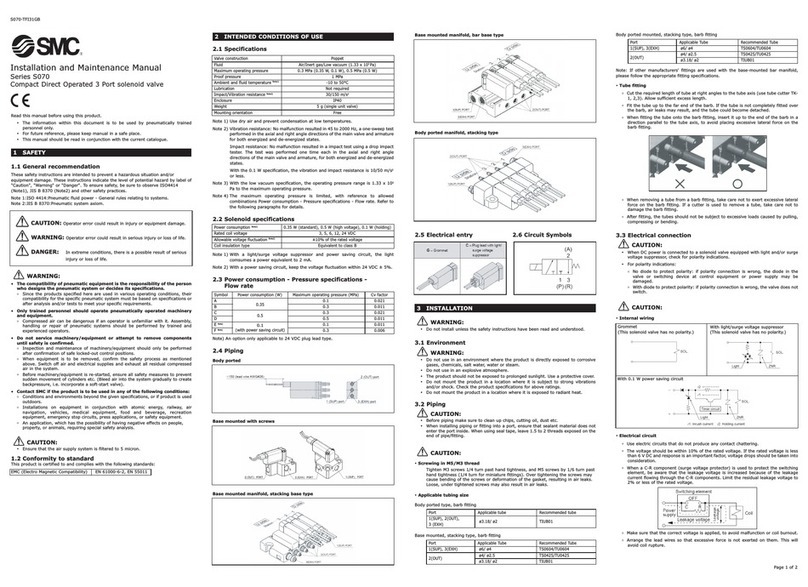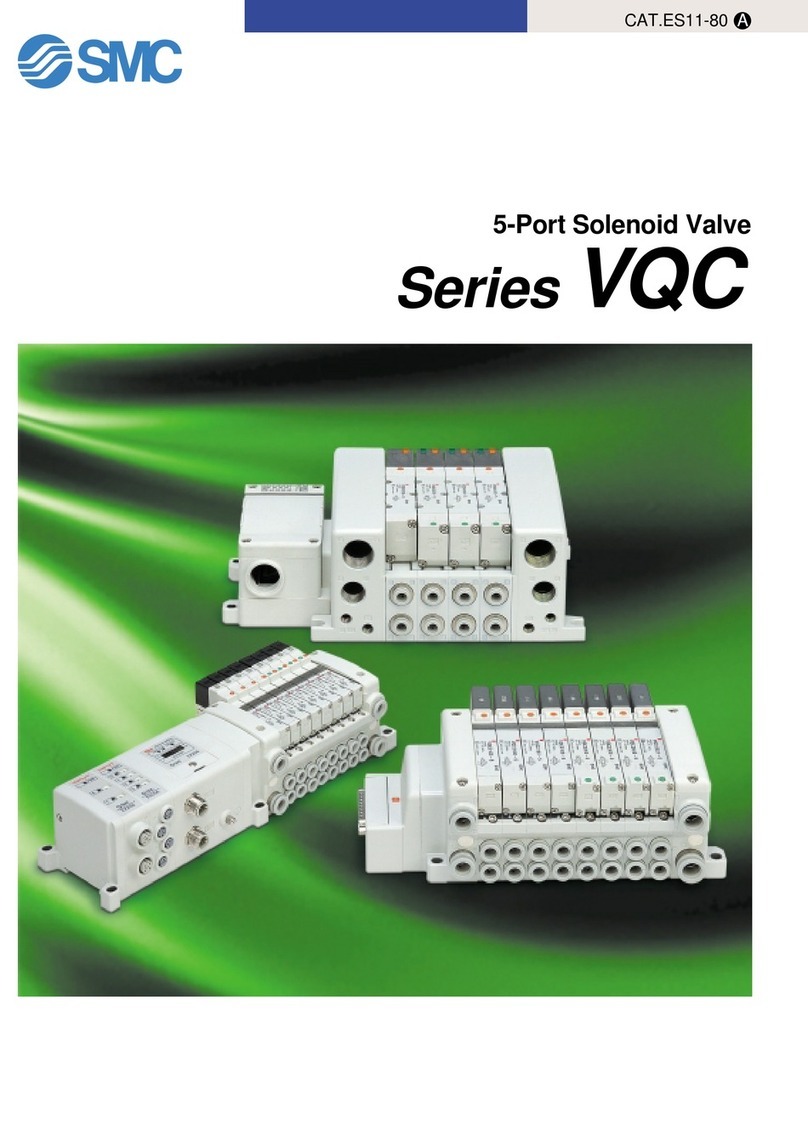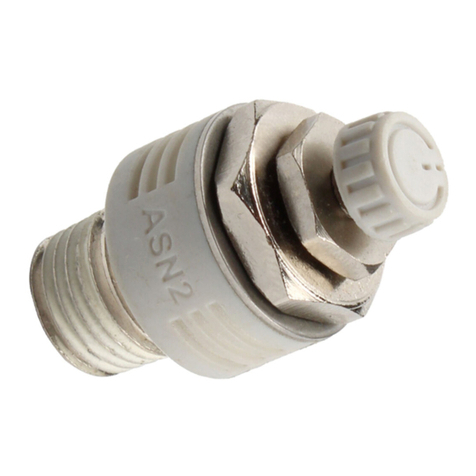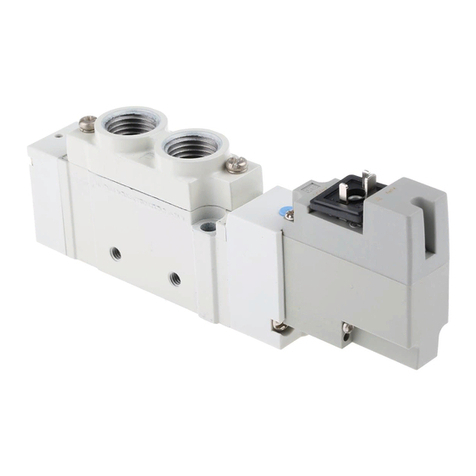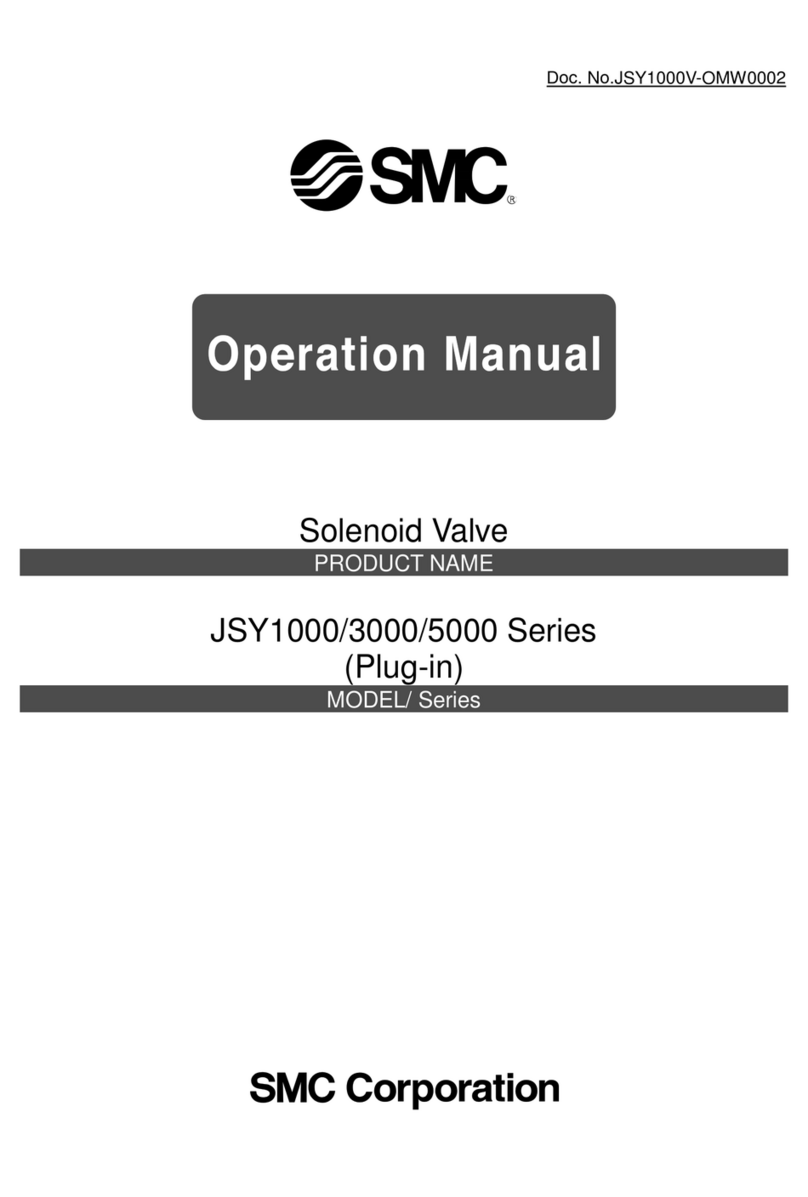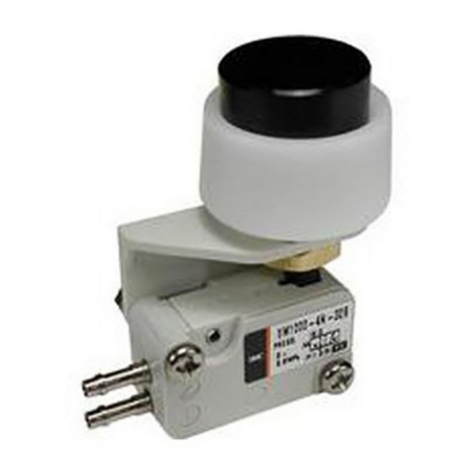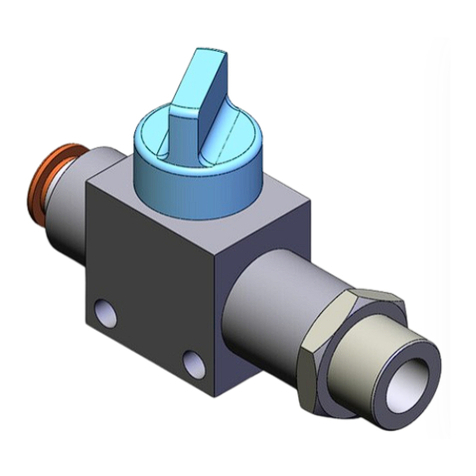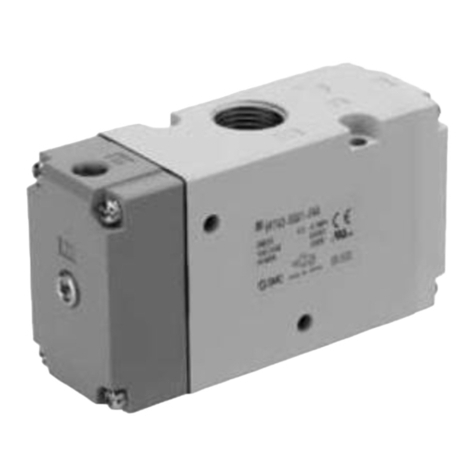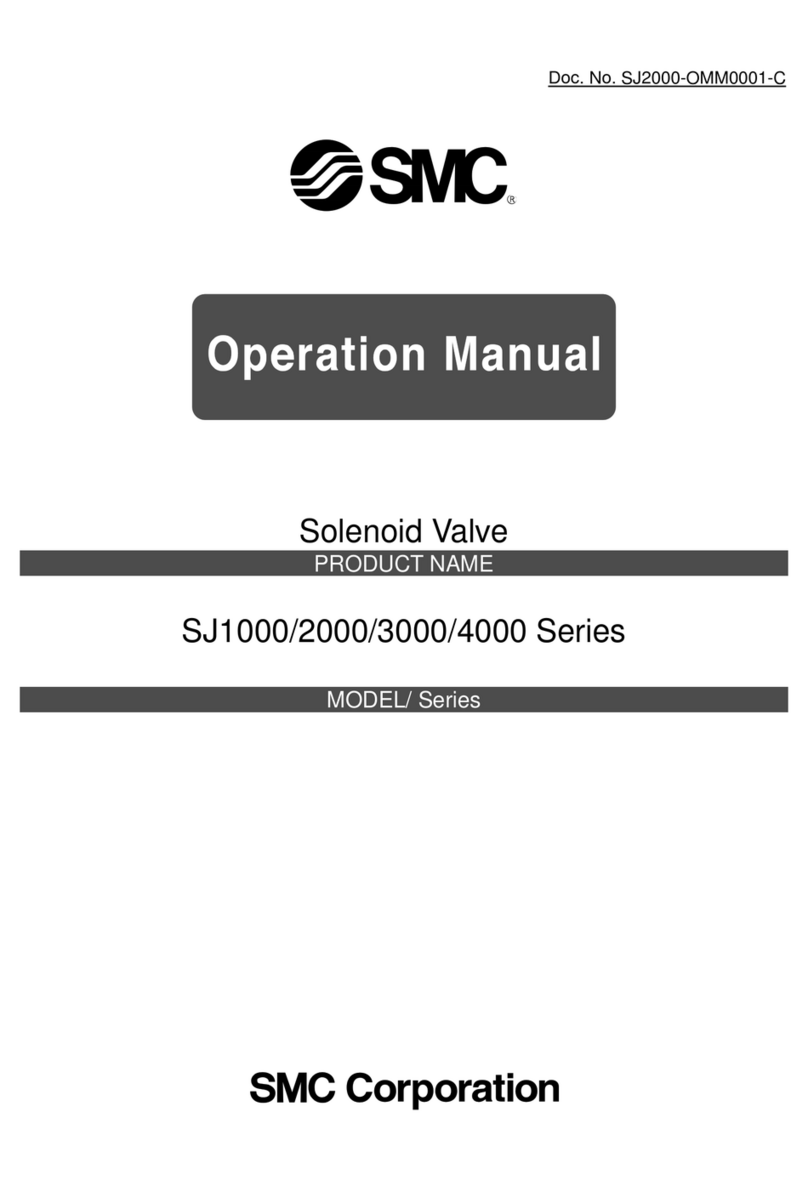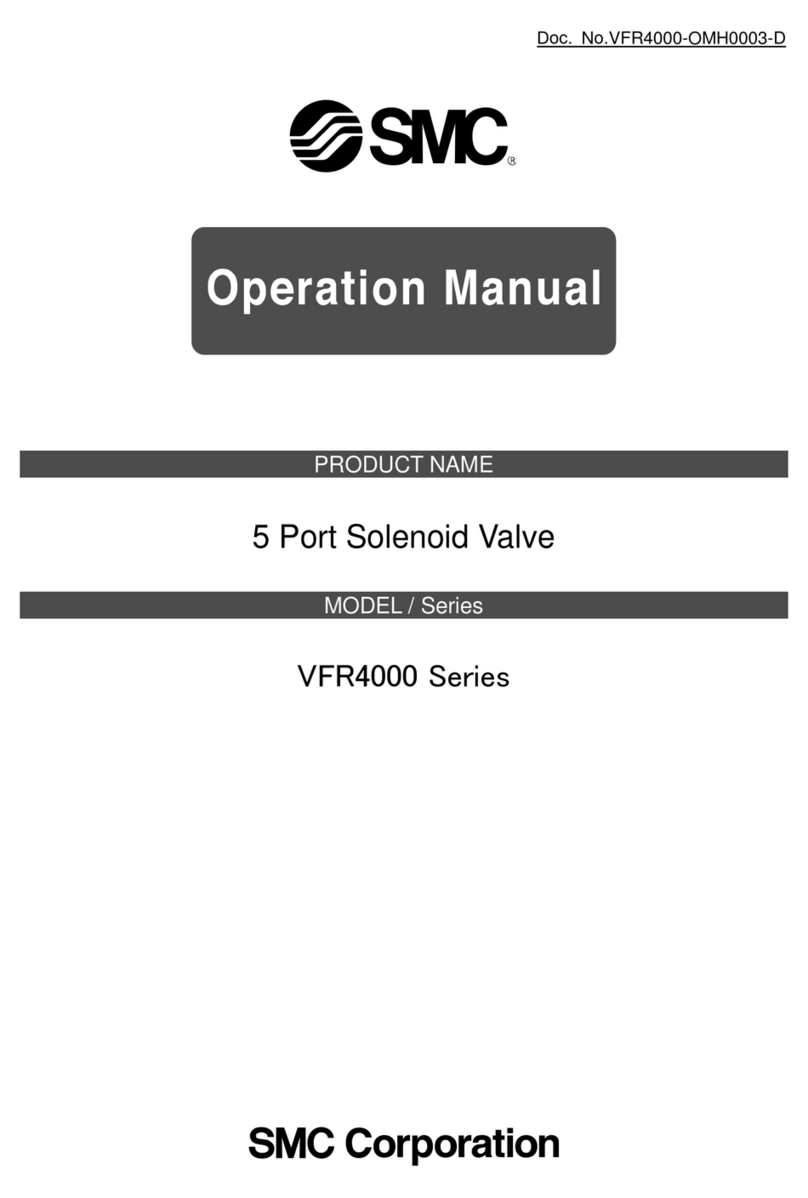56-VV5QC*1-TFL33-D
2 Specifications (continued)
56-VQC4000 (56-EX500)
Figure 7
56-VQC4000 (56-EX250)
Figure 8
3 Installation
3.1 Installation
Do not install the product unless the safety instructions have been read
and understood.
Protect from impacts using an ATEX enclosure suitable for impacts.
3.2 Environment
Do not use in an environment where the product is directly exposed to
corrosive gases, chemicals, salt water, water or steam.
Do not use in an explosive atmosphere, except Zone 2/22.
The product should not be exposed to prolonged sunlight. Use a
protective cover.
Do not mount the product in a location where it is subject to excessive
vibrations and/or impacts.
Do not mount the product in a location exposed to radiant heat.
Remove emissive heat.
Employ suitable protective measures in locations where there is contact
with water droplets, oil or welding splatter, etc.
When the solenoid valve is mounted in a control panel or is energised for
a long time, make sure the ambient temperature is within the valve
specification range.
3.3 Piping
Before piping make sure to clean up chips, cutting oil, dust etc.
When installing piping or fittings, ensure sealant material does not enter
inside the port. When using seal tape, leave 1.5 to 2 threads exposed on
the end of the pipe/fitting.
Install piping so that it does not apply pulling, pressing, bending or other
forces on the valve body.
3 Installation (continued)
Tighten fittings to the specified tightening torque shown in Table 1.
Table 1
3.4 Electrical Connection
The manifold has negative common (-COM).
Avoid mis-wiring, as this can cause malfunction, damage and
combustion to the product.
Use voltage that is within ±10% of the rated voltage. Application of
incorrect voltage may cause malfunction or damage.
To prevent noise and surge in signal lines, keep all wiring separate from
power lines and high voltage lines. Otherwise this can cause malfunction.
Use electrical circuits that do not generate chattering in their contacts.
Do not bend or pull cables repeatedly.
Disconnect power supply before removing or making electrical
connections
Multiple connector wiring (M-Kit)
Figure 9
3 Installation (continued)
Terminal block wiring (T-Kit)
Figure 10
3.5 Mounting
Never remove a valve from the manifold when energised.
Never remove terminal box cover when power is connected to the
manifold.
Never disconnect or reconnect cables or connectors when power is
connected to the manifold.
Install 56-VQC valves only.
Install 56-VV5QC manifolds only, as it has an integrated power saving
circuit.
56-VQC1000/2000 Valve mounting:
Figure 11
Removal procedure:
Loosen clamp screws until they turn freely (they do not come out).
Remove the solenoid valve from Clamp B by lifting the coil side of the
valve, while pushing on the screw top.
3 Installation (continued)
Mounting procedure:
Push the clamp screw. Clamp A now opens.
Insert the end plate hook of the valve into Clamp B from an angle.
Push the valve down into place (when the clamp screw is released,
Clamp A will lock).
56-VQC4000 Valve mounting:
Figure 12
Removal procedure:
Loosen mounting screws until they turn freely.
Remove the solenoid valve from Clamp B by lifting the coil side of the
valve first.
Mounting procedure:
Push the coil side of the valve into the connector on the manifold.
Tighten the mounting screws to torque 0.8 to 1.2 N•m.
Ensure all gaskets are present before mounting valves.
Do not let foreign matter stick to gaskets or sealing faces of the valve to
avoid air leaks
3.6 Lubrication
SMC products have been lubricated for life at manufacture, and do not
require lubrication in service.
If a lubricant is used in the system, use turbine oil Class 1 (no additive),
ISO VG32. Once lubricant is used in the system, lubrication must be
continued because the original lubricant applied during manufacturing
will be washed away.
4 Settings
4.1 Manual Override
Since connected equipment will operate when the manual override is
activated, confirm that conditions are safe prior to activation.
Non-locking push type (tool required)
Push down the manual override button with a small screwdriver, etc.
until it stops.
The manual override will return when released.
Figure 13
Slotted locking push type (tool required)
Push down the manual override button with a small flat head screwdriver
until it stops and turn 90° clockwise to lock.
